Design and Implementation of Novel Multi-Converter-Based Unified Power Quality Conditioner for Low-Voltage High-Current Distribution System
Abstract
:1. Introduction
1.1. Motivation
1.2. Literature Review
1.3. Contribution and Paper Structure
2. System Description
- Due to the parallel structure, the control algorithms of each converter are easier than for the cascade converter or multilevel module converter (MMC).
- The power rate and compensation current are promoted.
- Renewable energy and microgrid absorptive capabilities are achieved by the common DC bus and renewable energy interface.
3. Control Algorithms of UPQC
3.1. Control Algorithm of Series Converters
3.2. Control Algorithm of Shunt Converters
3.3. Control Algorithm of the Renewable Energy Interface
4. Simulation and Experimental Verification
4.1. Simulation Results
4.2. Experimental Results
4.2.1. Experimental Results of Shunt Converters
- was stable during the compensation.
- The converter had a perfect var control ability according to the compensation current detected.
- Benefiting from the three shunt converters, the compensation power increased to three-times that of one converter.
4.2.2. Experimental Results of Series Converters
4.2.3. Experimental Results of the Renewable Energy Interface
5. Discussion
6. Conclusions
Author Contributions
Funding
Conflicts of Interest
Nomenclature
| Input voltage of the distribution system | |
| Output voltage of the three-winding transformer | |
| Input voltage of the shunt converter | |
| Voltage of the common DC bus | |
| Output current of the transformer | |
| Output current of the shunt converter | |
| Load voltage | |
| Output voltage of the 3P4L converter | |
| Filter inductance and DC capacitor of the shunt converter | |
| Filters of the H-bridge inverters | |
| LCL filters of the switch side in the 3P4L converter | |
| Reference active and reactive power | |
| Actual active and reactive power | |
| Rated and actual angular frequency | |
| Droop coefficient of power | |
| Reference and actual voltage of the filter capacitor in the 3P4L converter | |
| Output voltage of the 3P4L converter | |
| Output voltage of renewable energy | |
| UPQC | Unified power quality controller |
| SVC | Static synchronous compensator |
| SVG | Static var generator |
| APF | Active power filters |
| STATCOM | Static synchronous compensator |
| DVR | Dynamic voltage regulator |
| 3P4L | Three-phase four-leg |
| SRF | Synchronous rotating frame |
| TDF | Two degrees of freedom |
| q-PRc | Quasi-PR controller |
| SVPWM | Space vector pulse width modulation |
| VSG | Virtual synchronous generator |
References
- Primadianto, A.; Lu, C.N. A Review on Distribution System State Estimation. IEEE Trans. Power Syst. 2017, 32, 3875–3883. [Google Scholar] [CrossRef]
- Garces, A.A. Linear Three-Phase Load Flow for Power Distribution Systems. IEEE Trans. Power Syst. 2016, 31, 827–828. [Google Scholar] [CrossRef]
- Pejovic, P.; Janda, Z. An improved current injection network for three-phase high-power-factor rectifiers that apply the third harmonic current injection. IEEE Trans. Ind. Electron. 2000, 47, 497–499. [Google Scholar] [CrossRef]
- Xiao, X.; Zheng, X.; Wang, Y.; Xu, S.; Zheng, Z. A Method for Utility Harmonic Impedance Estimation Based on Constrained Complex Independent Component Analysis. Energies 2018, 11, 2247. [Google Scholar] [CrossRef]
- Zhang, Y.; Roes, M.G.L.; Hendrix, M.A.M.; Duarte, J.L. Voltage Harmonic Suppression by Means of Grid-Connected Converters Using only Local Measurements. Energies 2018, 11, 2515. [Google Scholar] [CrossRef]
- Jayatunga, U.; Perera, S.; Ciufo, P.; Agalgaonkar, A.P. Voltage Unbalance Emission Assessment in Interconnected Power Systems. IEEE Trans. Power Deliv. 2013, 28, 2383–2393. [Google Scholar] [CrossRef] [Green Version]
- Ghijselen, J.A.L.; Bossche, A.P.M. Exact voltage unbalance assessment without phase measurements. IEEE Trans. Power Syst. 2005, 20, 519–520. [Google Scholar] [CrossRef]
- Paranavithana, P.; Perera, S.; Koch, R.; Emin, Z. Global Voltage Unbalance in MV Networks Due to Line Asymmetries. IEEE Trans. Power Deliv. 2009, 24, 2353–2360. [Google Scholar] [CrossRef] [Green Version]
- Kim, Y.J. Development and Analysis of a Sensitivity Matrix of a Three-Phase Voltage Unbalance Factor. IEEE Trans. Power Syst. 2018, 33, 3192–3195. [Google Scholar] [CrossRef] [Green Version]
- Tolba, M.; Rezk, H.; Diab, A.A.Z.; Al-Dhaifallah, M. A Novel Robust Methodology Based Salp Swarm Algorithm for Allocation and Capacity of Renewable Distributed Generators on Distribution Grids. Energies 2018, 11, 2556. [Google Scholar] [CrossRef]
- Lu, G.; Zhang, N. The effects of electric heating load on renewable energy generation utilization: Case study in North China. In Proceedings of the IEEE Conference on Energy Internet and Energy System Integration (EI2), Beijing, China, 26–28 November 2017. [Google Scholar]
- Liu, Y.; Steurer, M.; Ribeiro, P. A novel approach to power quality assessment: real time hardware-in-the-loop test bed. IEEE Trans. Power Deliv. 2005, 20, 1200–1201. [Google Scholar] [CrossRef]
- Rahmani, S.; Hamadi, A.; Al-Haddad, K.; Dessaint, L.A. A Combination of Shunt Hybrid Power Filter and Thyristor-Controlled Reactor for Power Quality. IEEE Trans. Ind. Electron. 2014, 61, 2152–2164. [Google Scholar] [CrossRef]
- Wu, J.C.; Jou, H.L.; Feng, Y.T.; Hsu, W.P.; Huang, M.S.; Hou, W.J. Novel Circuit Topology for Three-Phase Active Power Filter. IEEE Trans. Power Deliv. 2007, 22, 444–449. [Google Scholar] [CrossRef]
- Peng, F.Z.; Lai, J.S. Dynamic performance and control of a static VAr generator using cascade multilevel inverters. IEEE Trans. Ind. Appl. 1997, 33, 748–755. [Google Scholar] [CrossRef]
- Rao, P.; Crow, M.L.; Yang, Z. STATCOM control for power system voltage control applications. IEEE Trans. Power Deliv. 2000, 15, 1311–1317. [Google Scholar] [CrossRef]
- Xiao, S.; Qiu, W.; Miller, G.; Wu, T.X.; Batarseh, I. An Active Compensator Scheme for Dynamic Voltage Scaling of Voltage Regulators. IET Power Electron. 2009, 24, 307–311. [Google Scholar] [CrossRef]
- Jothibasu, S.; Mishra, M.K. A Control Scheme for Storageless DVR Based on Characterization of Voltage Sags. IEEE Trans. Power Deliv. 2014, 29, 2261–2269. [Google Scholar] [CrossRef]
- Khadkikar, V.; Chandra, A. UPQC-S: A Novel Concept of Simultaneous Voltage Sag/Swell and Load Reactive Power Compensations Utilizing Series Inverter of UPQC. IET Power Electron. 2011, 26, 2414–2425. [Google Scholar] [CrossRef]
- Ye, J.; Gooi, H.B.; Wu, F. Optimal Design and Control Implementation of UPQC Based on Variable Phase Angle Control Method. IEEE Trans. Ind. Inform. 2018, 14, 3109–3123. [Google Scholar] [CrossRef]
- Monteiro, L.F.; Aredes, M.; Pinto, J.G.; Exposto, B.F.; Afonso, J.L. Control algorithms based on the active and non-active currents for a UPQC without series transformers. IET Power Electron. 2016, 9, 1985–1994. [Google Scholar] [CrossRef]
- Xu, Q.; Ma, F.; Luo, A.; He, Z.; Xiao, H. Analysis and Control of M3C-Based UPQC for Power Quality Improvement in Medium/High-Voltage Power Grid. IEEE Trans. Power Electron. 2016, 31, 8182–8194. [Google Scholar] [CrossRef]
- Ambati, B.B.; Khadkikar, V. Optimal Sizing of UPQC Considering VA Loading and Maximum Utilization of Power-Electronic Converters. IEEE Trans. Power Deliv. 2014, 29, 1490–1498. [Google Scholar] [CrossRef]
- Abdul, M.R.; Amit, V.S.; Vinod, K.; Zeineldin, H.H. A Novel Ten-Switch Topology for Unified Power Quality Conditioner. IET Power Electron. 2016, 31, 6937–6946. [Google Scholar]
- Guo, W.Y.; Xiao, L.Y.; Dai, S.T. Control and design of a current source united power quality conditioner with fault current limiting ability. IET Power Electron. 2013, 6, 1755–4535. [Google Scholar] [CrossRef]
- Baghaee, H.R.; Mirsalim, M.; Gharehpetian, G.B.; Talebi, H.A. A generalized descriptor-system robust H∞ control of autonomous microgrids to improve small and large signal stability considering communication delays and load nonlinearities. INT J. Elec. Power. 2017, 92, 63–82. [Google Scholar] [CrossRef]
- Yang, B.; Zhao, Z.H.; Liu, M.X.; Zhao, J.F. Research on zero-sequence circulating current of PCS in MW energy storage system. In Proceedings of the IEEE International Conference on Power System Technology (POWERCON), Wollongong, Australia, 28 September–1 October 2016; pp. 1–5. [Google Scholar]
- Pochetjamroen, G.; Ise, T. Power Control of Low Frequency AC Transmission Systems Using Cycloconverters with Virtual Synchronous Generator Control. Energies 2017, 10, 34. [Google Scholar] [CrossRef]
- Cao, Y.J.; Wang, W.Y.; Li, Y.; Tan, Y.; Chen, C.; He, L.; Hager, U.; Rehtanz, C. A Virtual Synchronous Generator Control Strategy for VSC-MTDC Systems. IEEE Trans. Energy Convers. 2018, 33, 750–761. [Google Scholar] [CrossRef]
- Ma, Y.; Lin, Z.; Yu, R.; Zhao, S. Research on Improved VSG Control Algorithm Based on Capacity-Limited Energy Storage System. Energies 2018, 11, 677. [Google Scholar] [CrossRef]
- Liu, Y.T.; Lai, C.M. LCL Filter Design with EMI Noise Consideration for Grid-Connected Inverter. Energies 2018, 11, 1646. [Google Scholar] [CrossRef]





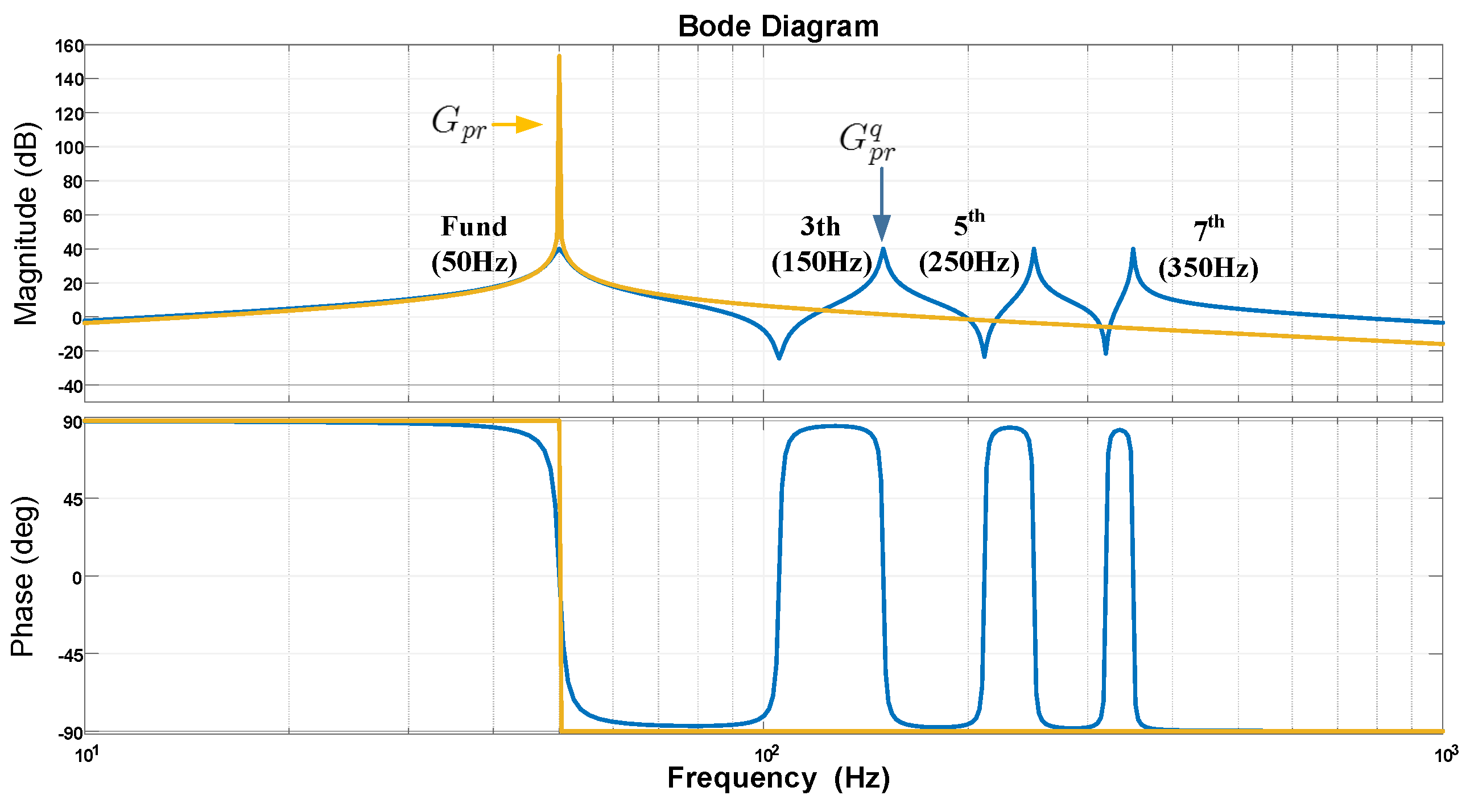
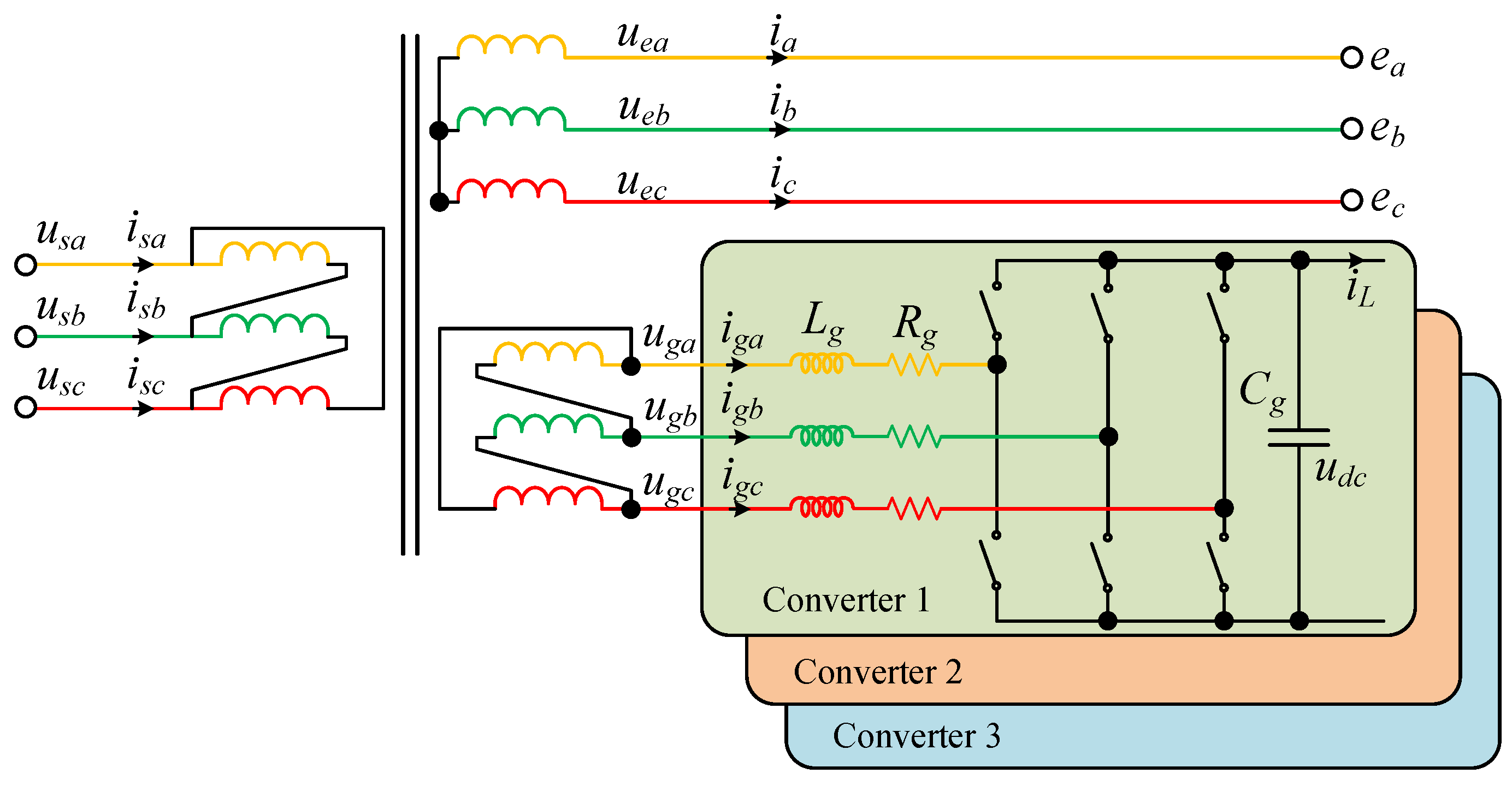

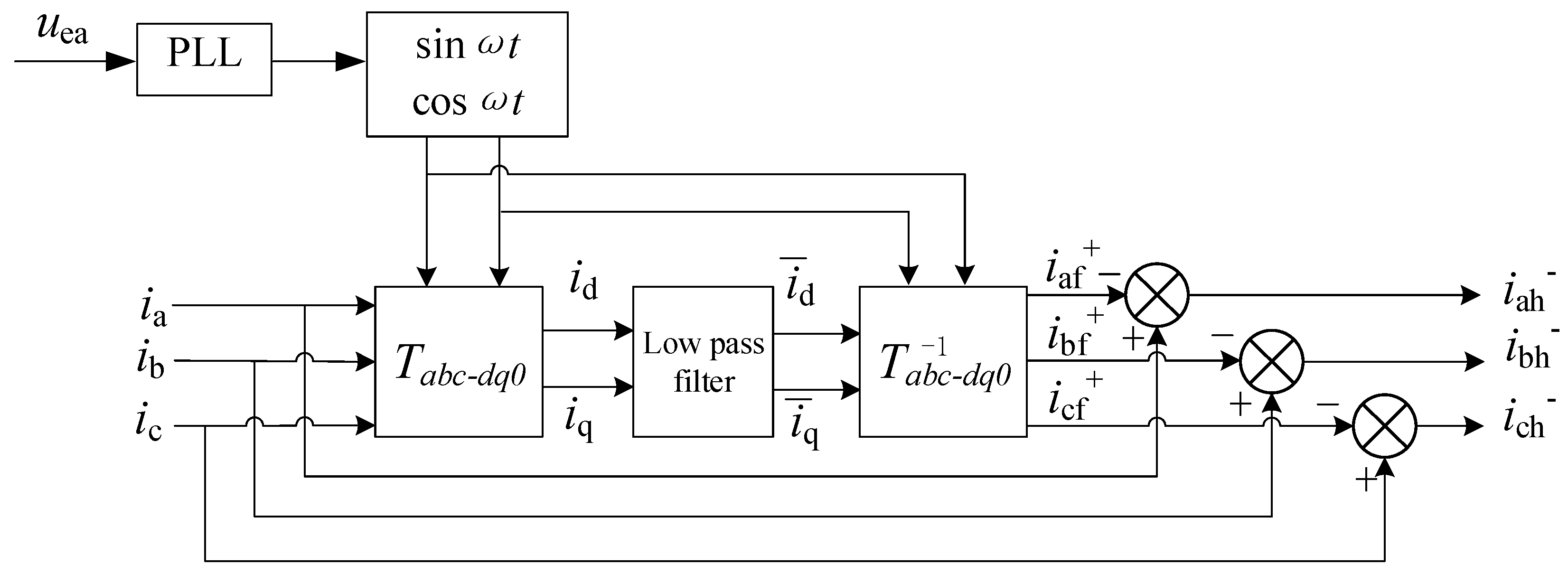



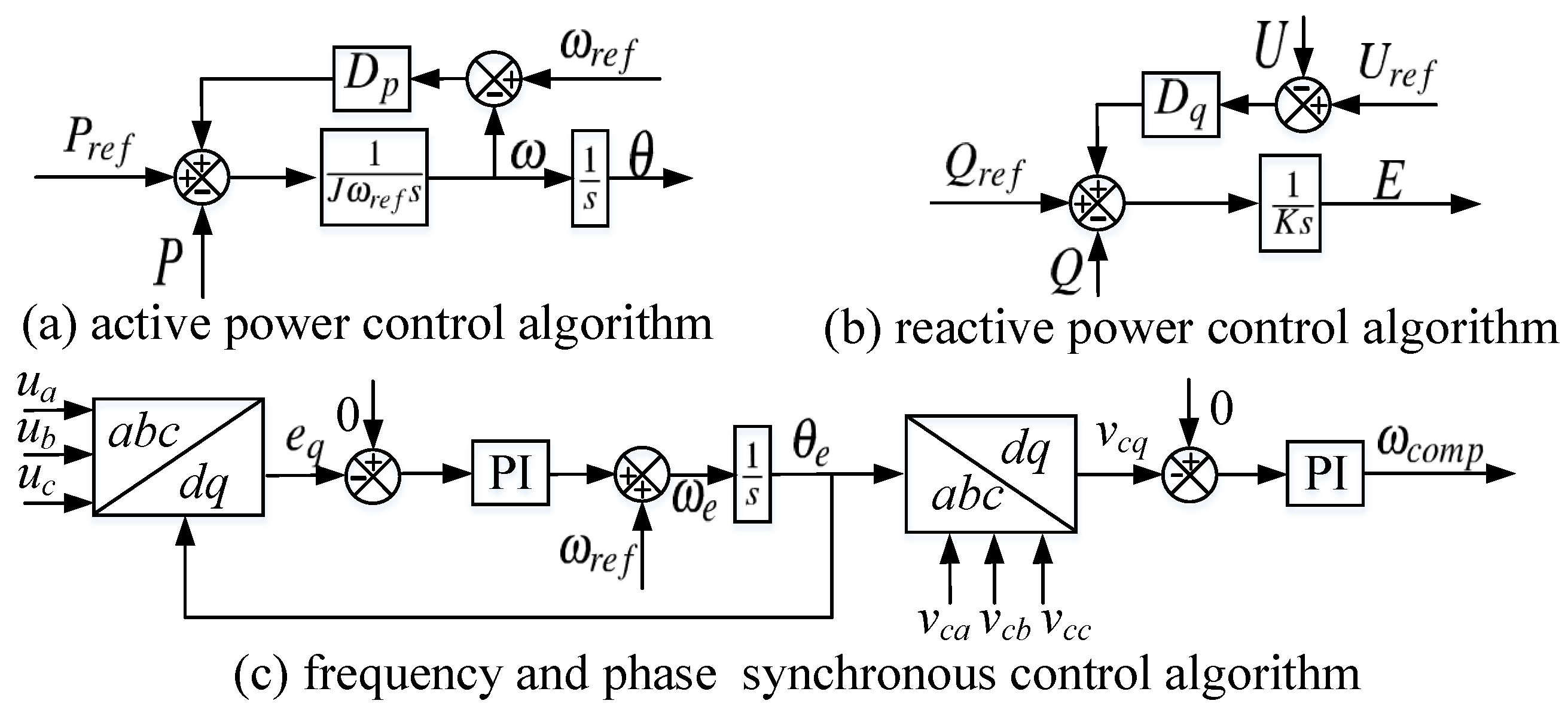
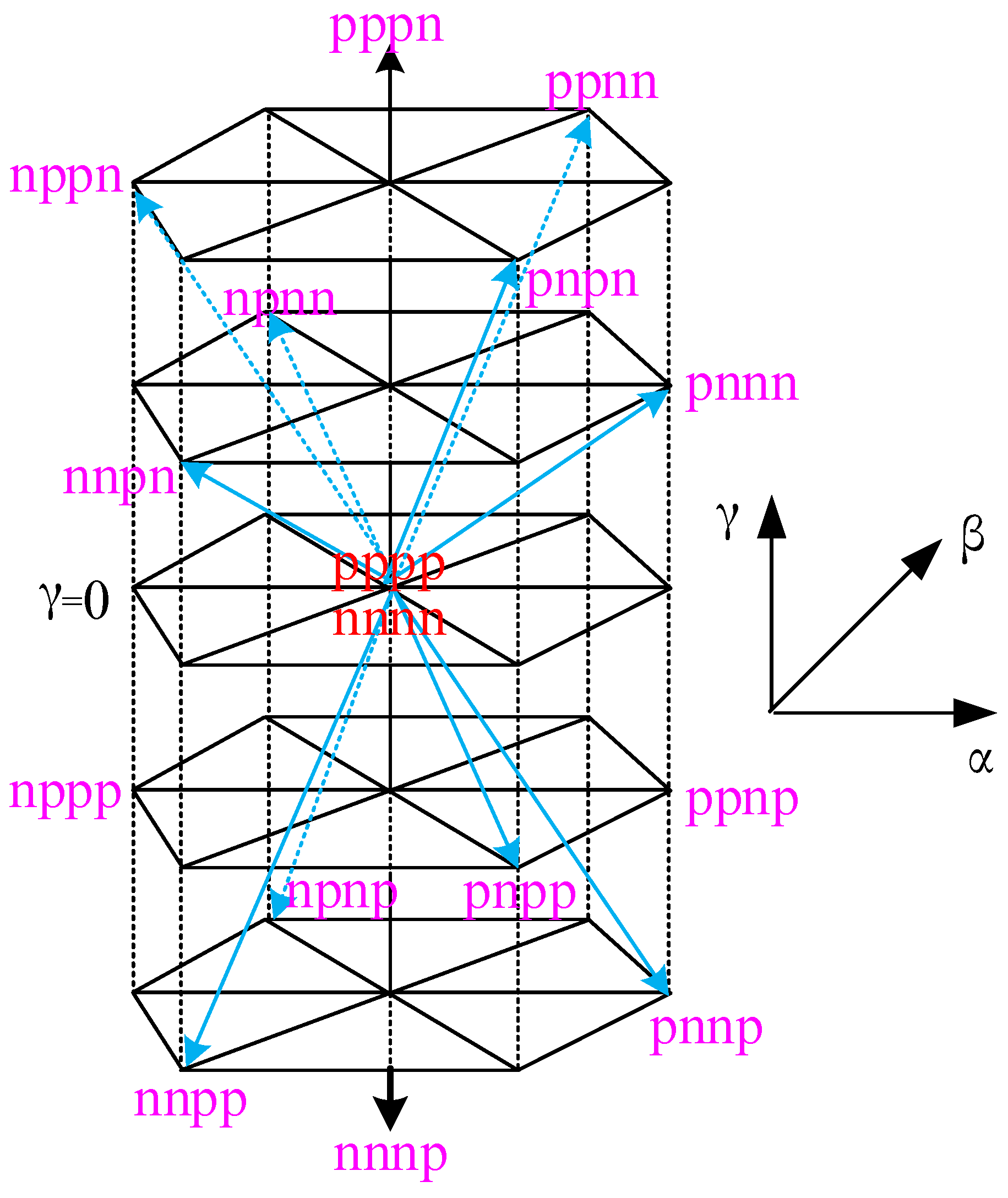



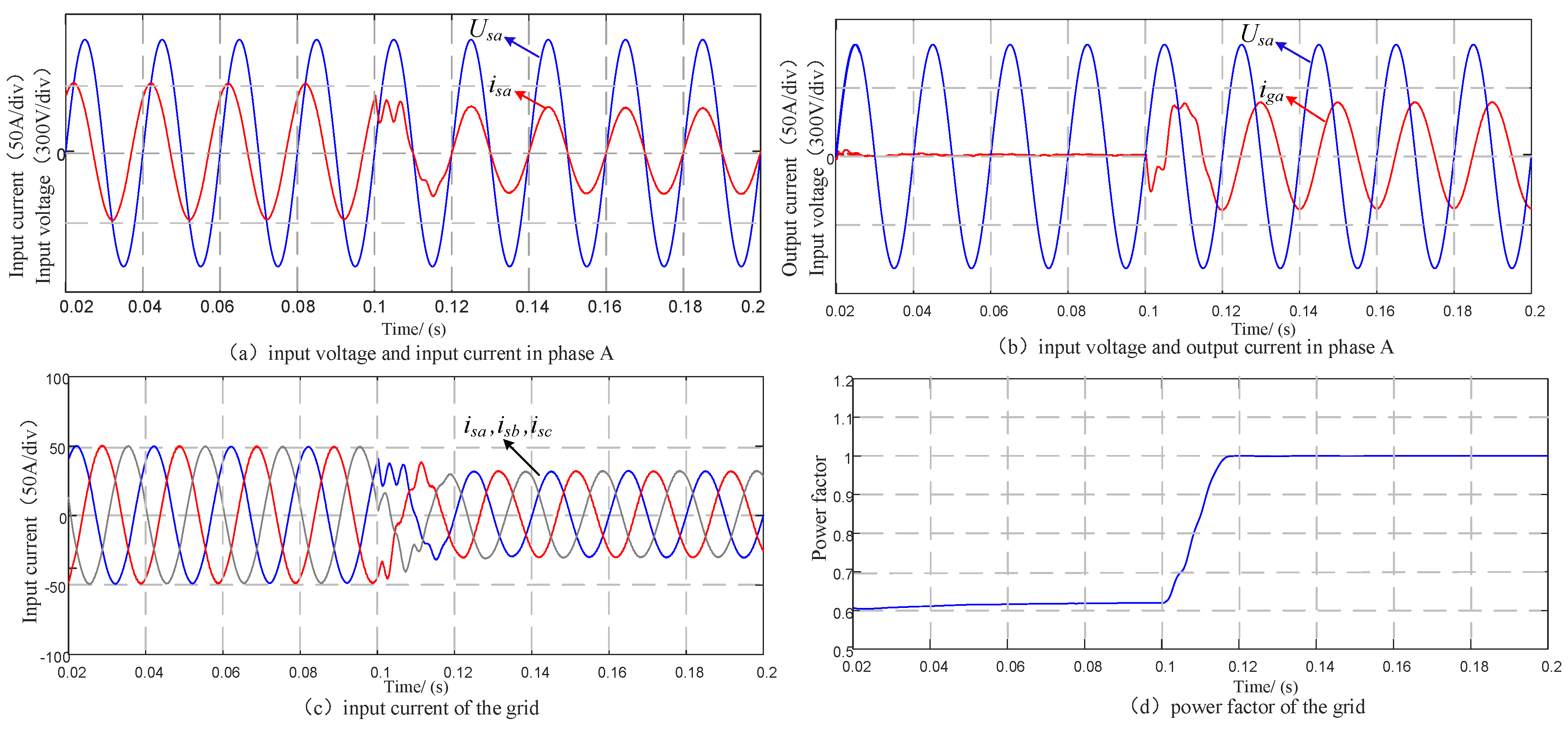

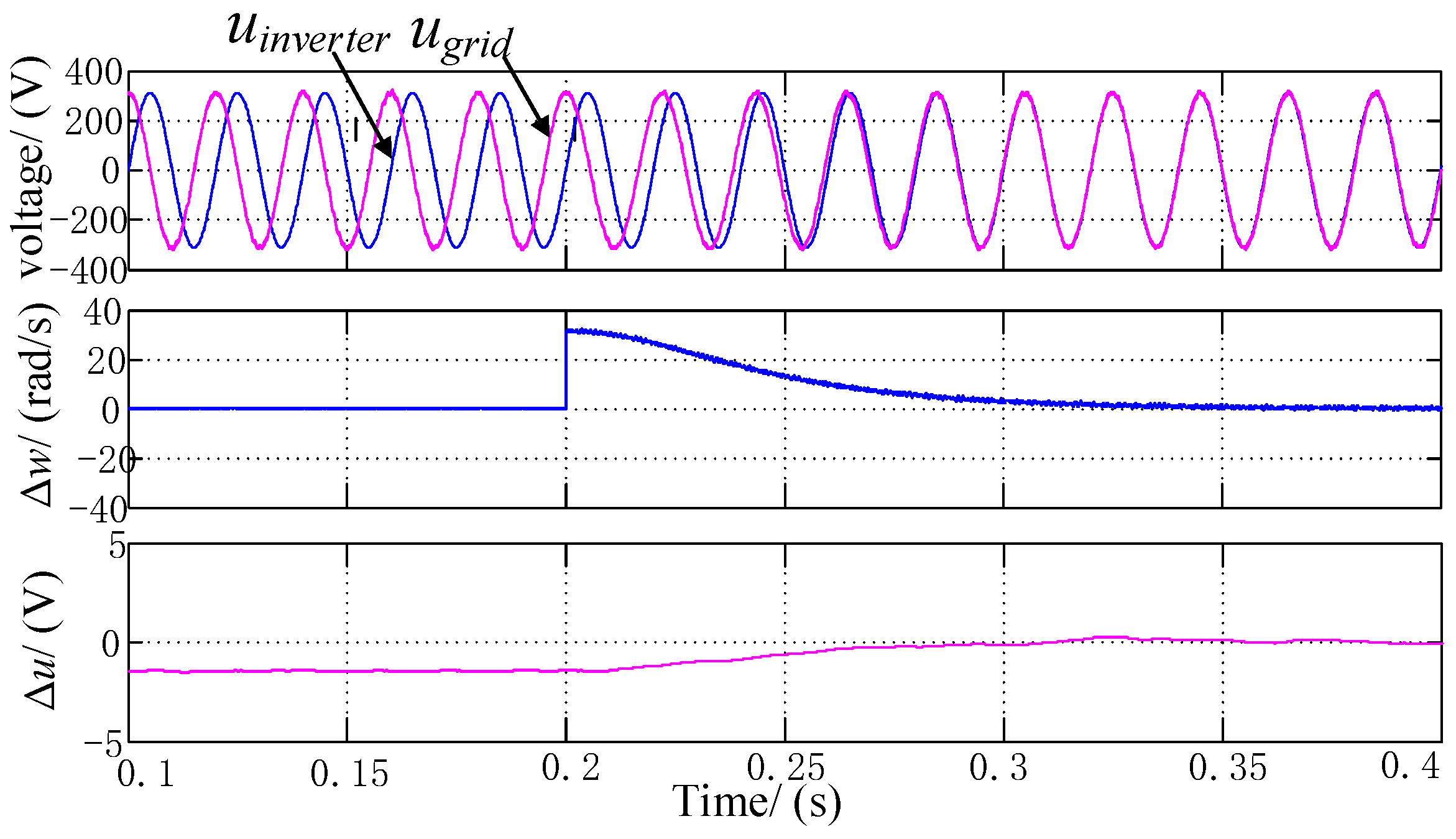
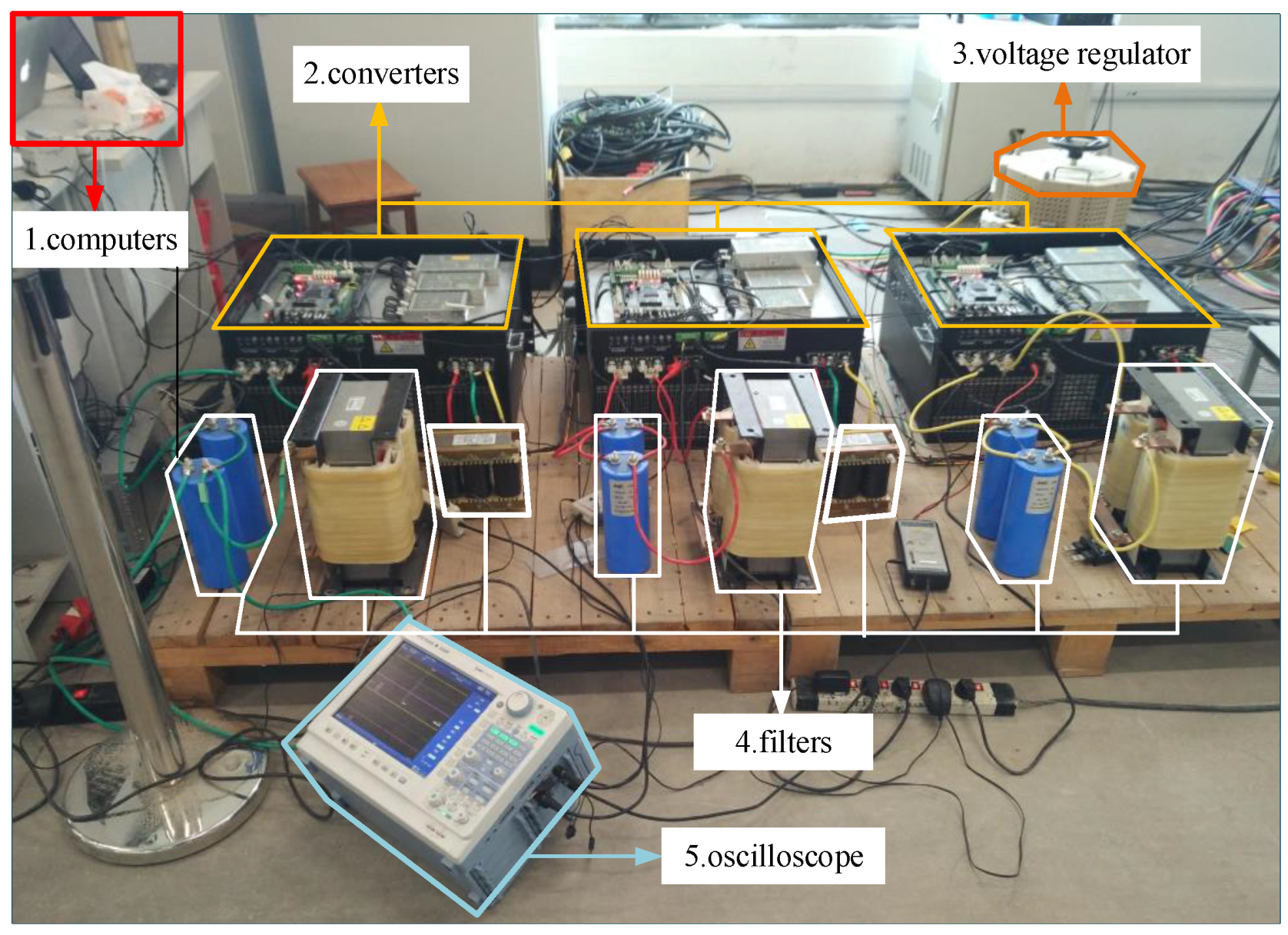

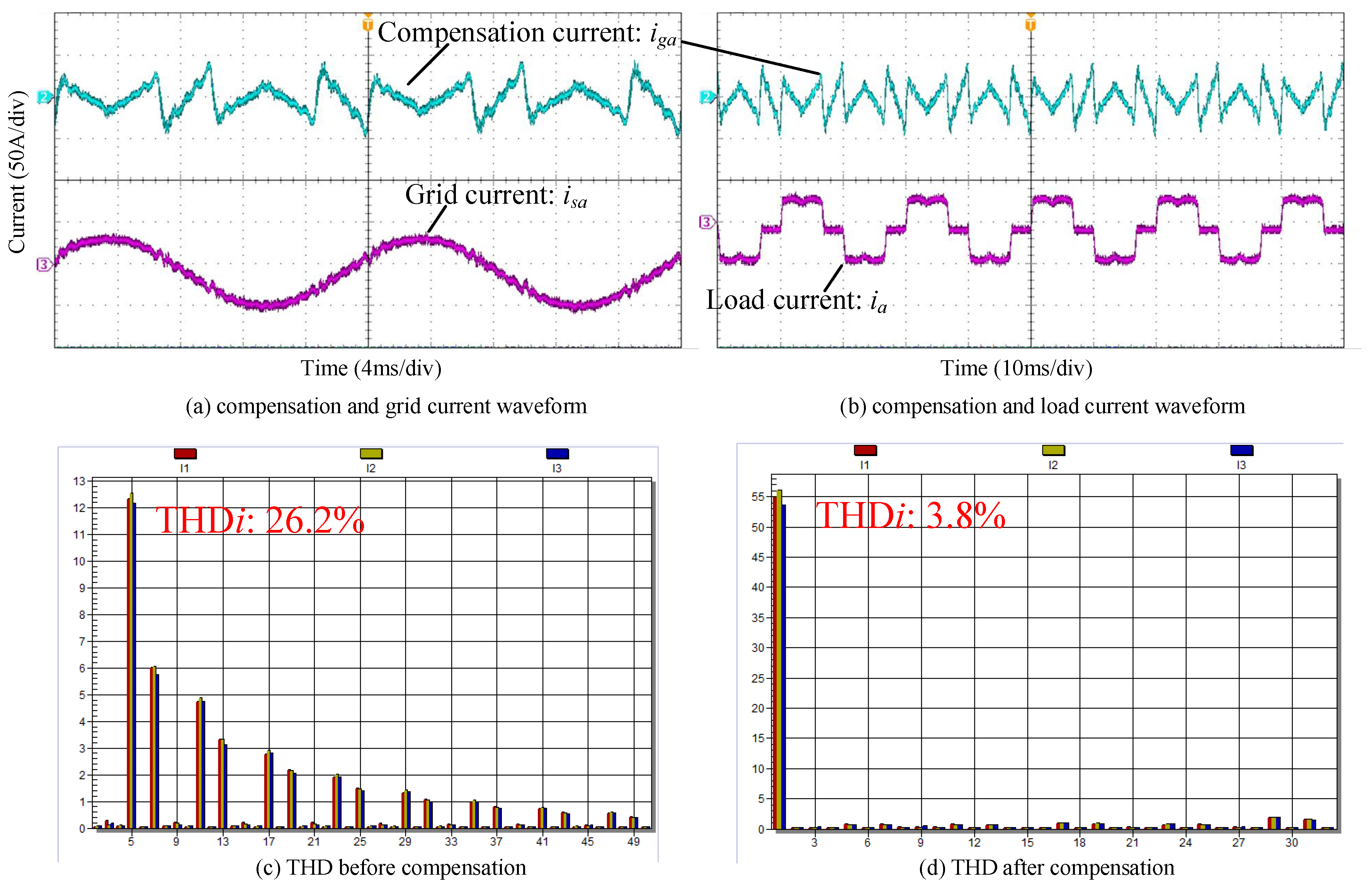

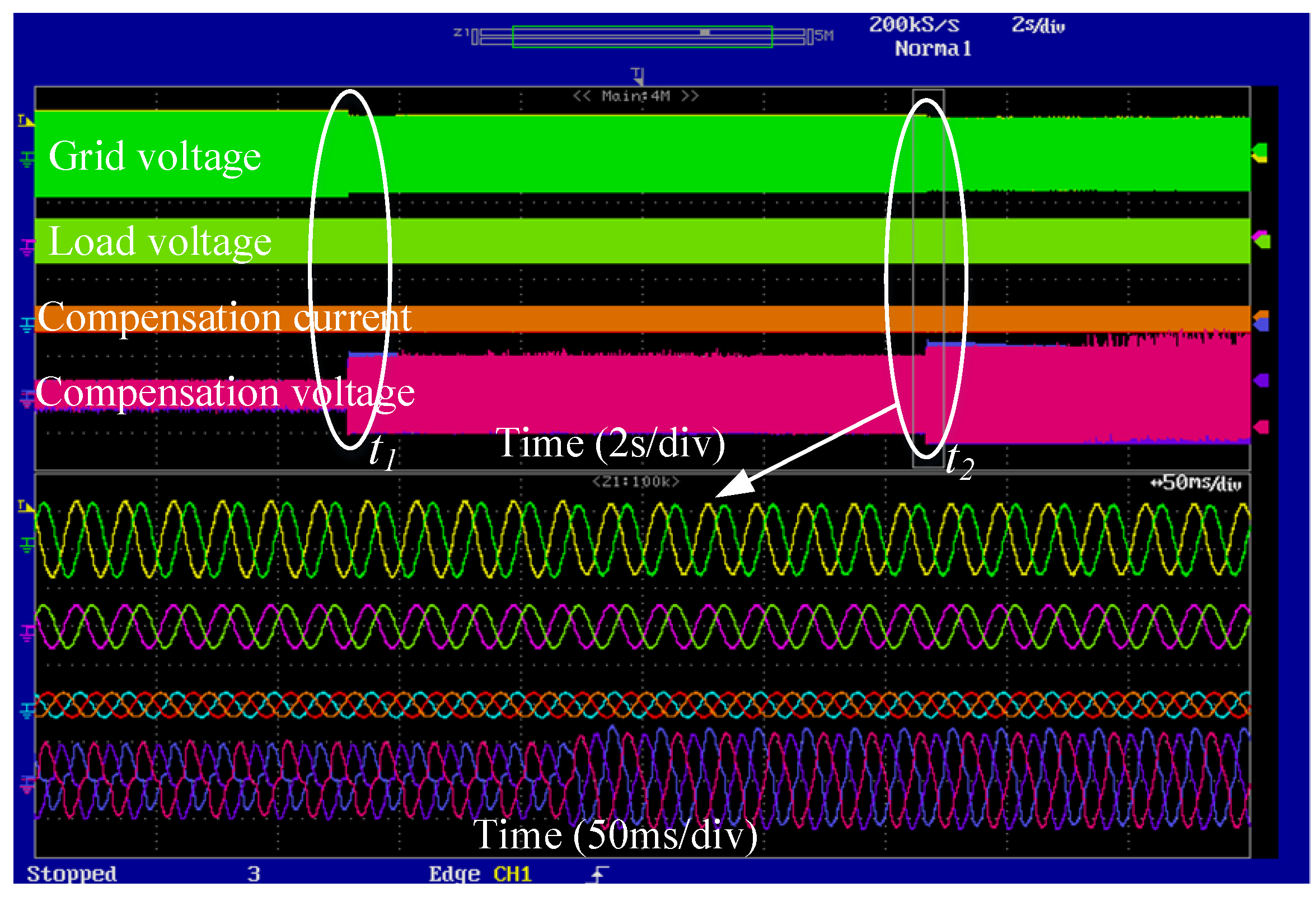
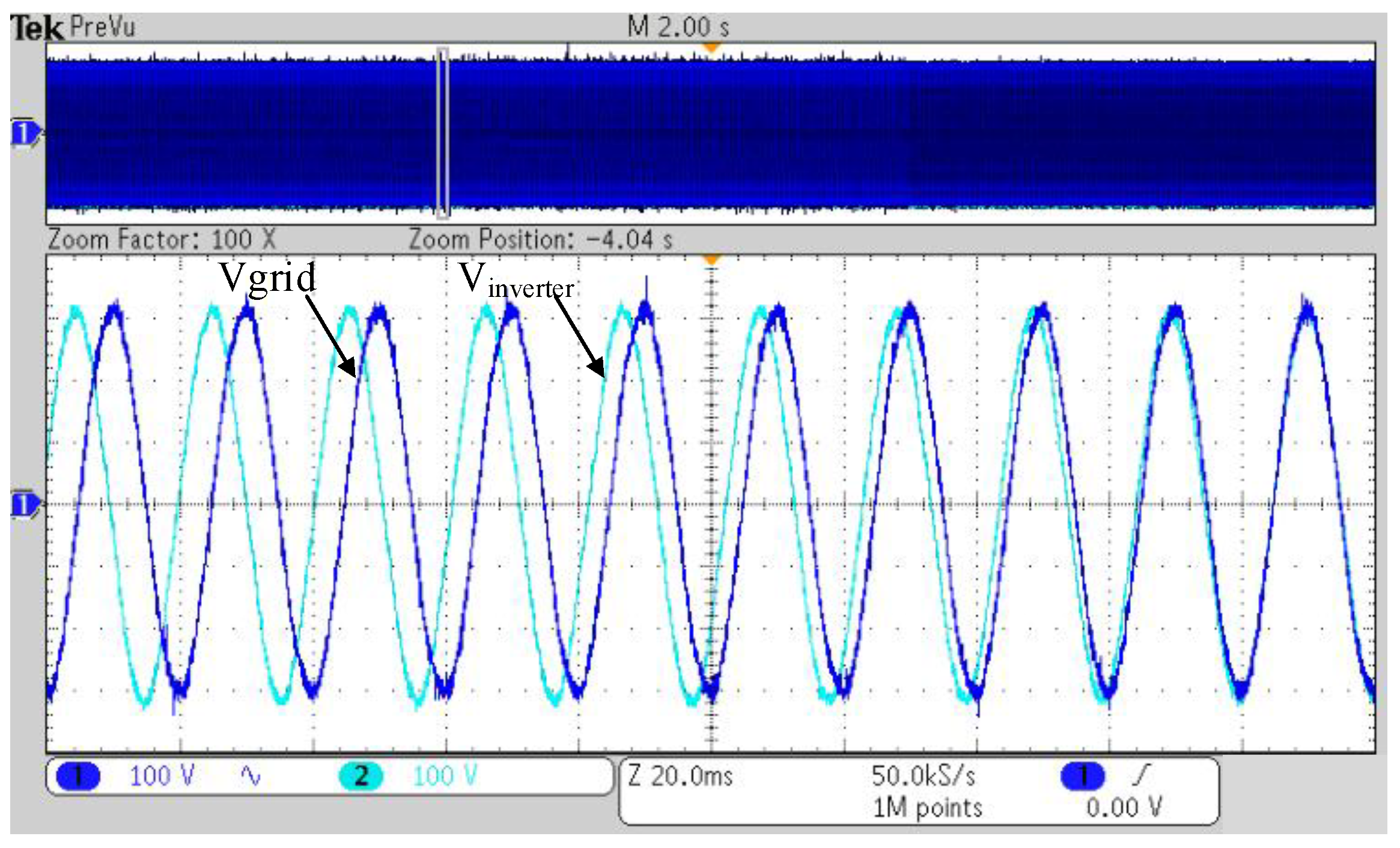
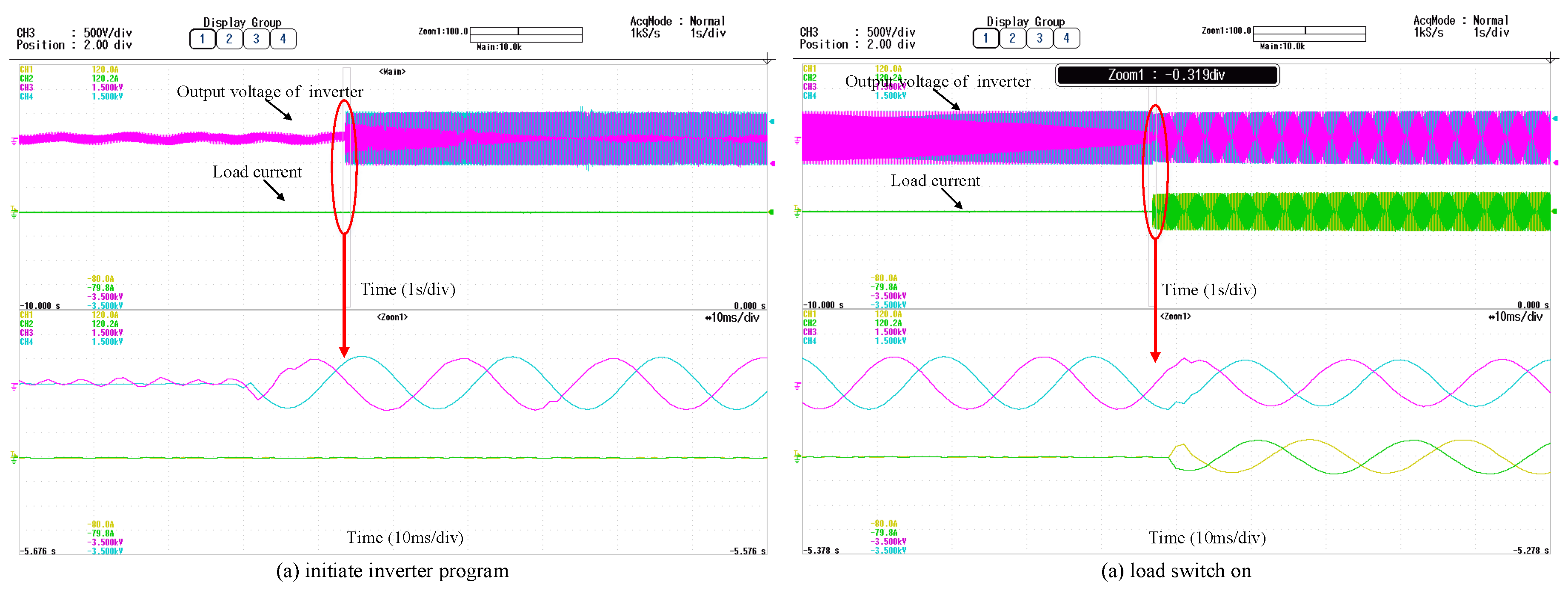
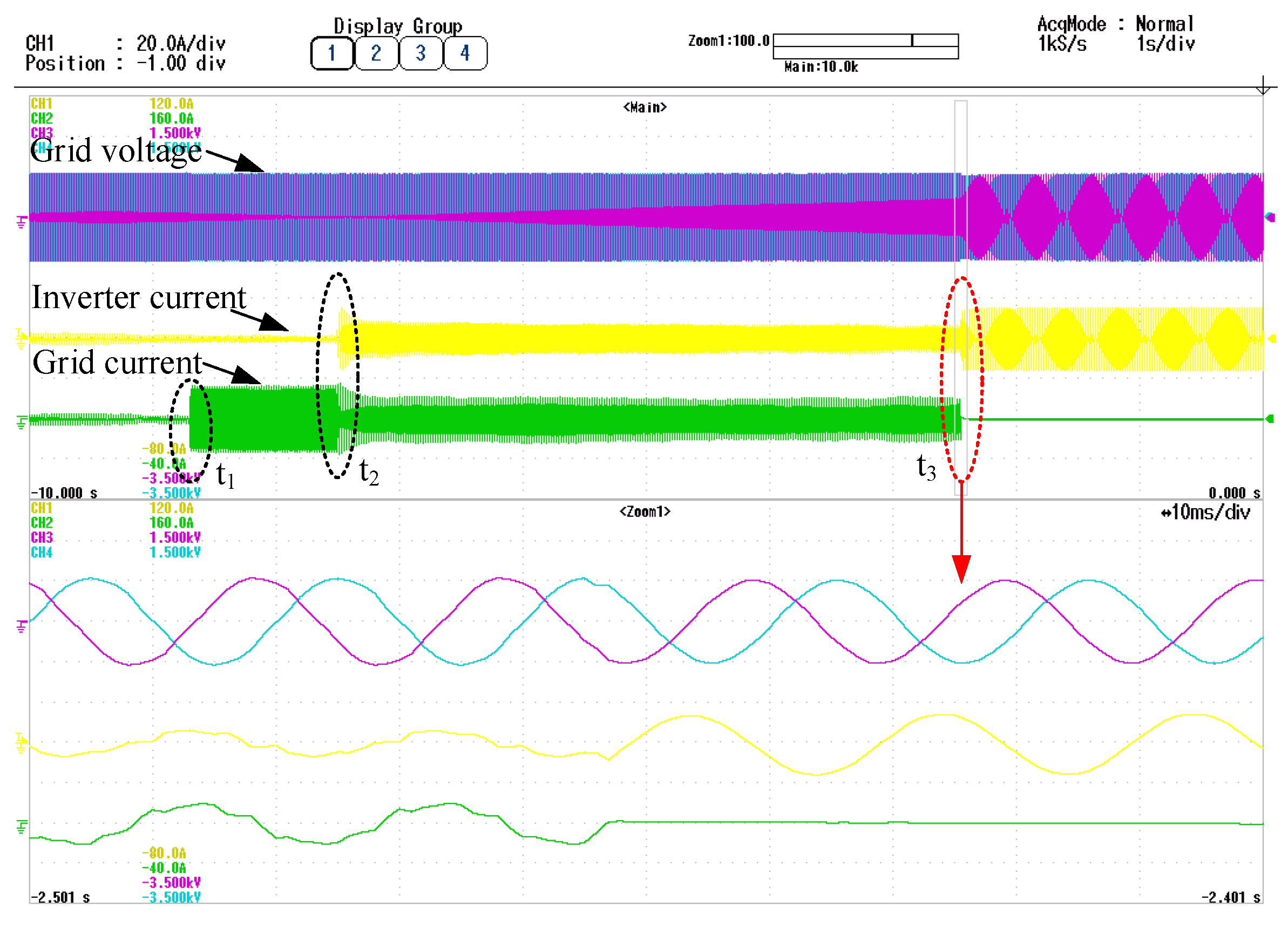
| Parameters | Label | Value | Unit |
|---|---|---|---|
| Filter inductance of the shunt converter | 2 | mH | |
| DC capacitor in each shunt converter | 4400 | F | |
| Filter inductance of the H-bridge | 0.2 | mH | |
| Filter capacitor of the H-bridge | 400 | F | |
| Filter inductance of the switch side in the 3P4L converter | 3.2 | mH | |
| Filter inductance of the grid side in the 3P4L converter | 0.8 | mH | |
| Filter capacitor of the 3P4L converter | 10 | F | |
| Voltage of the common DC bus | 800 | V | |
| Proportional integral parameter | 4 | / | |
| Proportional integral parameter | 800 | / |
© 2018 by the authors. Licensee MDPI, Basel, Switzerland. This article is an open access article distributed under the terms and conditions of the Creative Commons Attribution (CC BY) license (http://creativecommons.org/licenses/by/4.0/).
Share and Cite
Yang, B.; Liu, K.; Zhang, S.; Zhao, J. Design and Implementation of Novel Multi-Converter-Based Unified Power Quality Conditioner for Low-Voltage High-Current Distribution System. Energies 2018, 11, 3150. https://doi.org/10.3390/en11113150
Yang B, Liu K, Zhang S, Zhao J. Design and Implementation of Novel Multi-Converter-Based Unified Power Quality Conditioner for Low-Voltage High-Current Distribution System. Energies. 2018; 11(11):3150. https://doi.org/10.3390/en11113150
Chicago/Turabian StyleYang, Bin, Kangli Liu, Sen Zhang, and Jianfeng Zhao. 2018. "Design and Implementation of Novel Multi-Converter-Based Unified Power Quality Conditioner for Low-Voltage High-Current Distribution System" Energies 11, no. 11: 3150. https://doi.org/10.3390/en11113150





